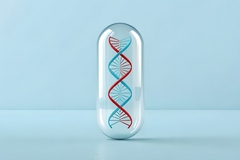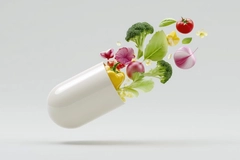Skim Milk Ranks Right at the Very Top of Nutritious Beverages by Leading Experts

The system uses a number score from one to 100 (with 100 being the best score) to indicate the nutritional quality of a specific food: Skim milk joins spinach, strawberries and broccoli as one of the top ranked foods according to the ONQI.
10/04/08 Later this year, supermarkets across the country are expected to post signs on aisle shelves ranking each food, drink or product by a number. The new system called the Overall Nutritional Quality Index (ONQI) was developed by an international team of top nutrition experts, led by Dr. David Katz at Yale University's Griffin Hospital Prevention Research Center. The system uses a number score from one to 100 (with 100 being the best score) to indicate the nutritional quality of a specific food: Skim milk joins spinach, strawberries and broccoli as one of the top ranked foods according to the ONQI. Skim milk scores a 91, which puts it right at the very top of ranked beverages.
"This is great news," says Steve James, Executive Director of the California Milk Processor Board (CMPB), the creators of GOT MILK? "This new system reaffirms what we've been educating the public about for years. Milk strengthens bones, muscles, teeth and even hair. It really is one of the best foods out there."
According to the researchers, skim milk is one of the most nutritious beverages available at the supermarket with a 91. One percent milk receives 81, orange juice ranks 39, diet soft drink gets a 15 and regular soda receives a one rating. Scientists say the new system does not characterize any one food or drink as bad. What they hope to achieve with the ONQI is to increase public awareness about the need to make wiser food and drink choices. The ONQI hopes to make it easier for consumers to read and understand the nutritional value of products they'd hope to purchase at the supermarket.
"The ONQI does not tell anybody what food to choose or to avoid," says Dr. Katz. "But it makes choosing on the basis of nutritional quality easy, at a glance. The high scores for milk, particularly skim milk, should encourage that choice for health-conscious consumers."
The development of the ONQI dates back to 2003. Its goal is to improve the dietary intake of Americans and to curtail the spread of obesity in the United States. While Johns Hopkins Bloomberg School of Public Health reports that 66 percent of adults were overweight or obese in 2003-2004, such problems no longer pertain to just grown-ups. A Mayo Clinic article published in 2006 reports that one-third of children in this country are overweight or at-risk of becoming overweight, totaling to about 25 million kids. That number has doubled for children between the ages of 6 to 11 and has tripled for teenagers over the last two decades. In the Hispanic community, a 2006 National Council of La Raza Fact Sheet reports that 39.3 percent of Mexican-American children (the largest Hispanic group in the US) ages 6 to 11 are overweight and 23.7 percent are obese -- outnumbering African-Americans and Whites.
"The epidemic of obesity, and related conditions such as diabetes, is already dire and will only get worse if people do not improve their food choices," says Dr. Katz. "The good news is that diet and health can be improved -- one well informed food choice at a time."
Though the ONQI does not offer guidance as far as portion size is concerned, the American Academy of Pediatrics as well as the U.S. Department of Health and Human Services recommend that kids and adults alike drink at least three to four glasses of non-fat or low fat milk daily.












